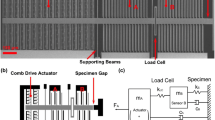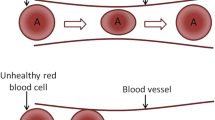Abstract
Polymers are very attractive as thin films in emerging reel-to-reel manufacturing or as spin coated from liquid form in a quick and low cost process in standard microfabrication processes. There is a wide selection of materials available with many different thermal, electrical, and mechanical properties. With continuous growth in consumer electronics and sensors sectors, the range of potential application fields is further diversifying and integration of MEMS modules, as well as delivering IC functionality in thin foil-like packaging with proven reliability and reduction in cost is increasingly required. Furthermore, increased volume and decentralisation of testing within medical diagnostics field worldwide (IVD Point of Care and Patient Self Testing trends) require low cost solutions for disposable test cartridges and other supporting consumables. In majority of the emerging medical applications, integrated, low cost sensors need to operate in liquid environment, often rendering the use of standard Si-based solutions inadequate and costly. Polymer-based microcantilevers, realised by standard surface microfabrication techniques, were chosen for this study as the alternative approach to Si-based MEMS. Cantilevers are well understood microstructures and so provide an excellent vehicle for assessing both thermo-mechanical properties of polymers as MEMS materials and their potential for die-level packaging and integration into miniaturized systems. Due to the nature of processes involved and their thermal budget, substitution of Si substrate with e.g. flexible substrates or polymer films is foreseen in the near future. Fabricated cantilever beams consist of various combinations of thin metal/polymer and polymer/polymer films. Polyimides, as structural material, have been selected for this study due to inherently good mechanical properties, good chemical resistance, low dielectric constant and high thermal stability.







Similar content being viewed by others
Notes
If Au layer is used for integrated sensor/actuator lines, contact openings (pads) need to be protected during final KI release etch (e.g. paint photoresit over the pads, followed by extensive soft bake).
This width provided the best meshing results in Intellisuite’s FEM.
References
S. Wilson, R.P.J. Jourdain, Q. Zhang, R. Dorey et al., Mater. Sci. Eng. R56, 1 (2007)
R. Ghodssi, L. Pinyen, MEMS Materials and Processes Handbook (Springer, New York, 2011)
T.A. Đakov, I.G. Popović, Lj.V. Rajaković, Chem. Ind. 68(5), 629 (2014)
J.S. Hyun, J.-S. Moon, J.-H. Park, J.W. Kim, Y.D. Kim, J.-H. Boo, Mater. Sci. Eng., B 149, 292 (2006)
C. Liu, Recent developments in polymer MEMS. Adv. Mater. 19, 3787 (2007)
S. Tsuyoshi, T. Makoto, N. Yoshiaki, N. Shintaro, K. Yusaku, S. Takayasu, S. Takao, Nat. Mater. 6, 413 (2007)
C. Richter, P. Weinzierl, W. Engl, C. Penzkofer, B. Irmer, T. Sulzbach, Microsyst. Technol. 18, 1119 (2012)
J. Henriksson, M.R. Gullo, J. Brugger, Sens. J. 13, 2849 (2013)
C.C. Lee, G. Alici, G.M. Spinks, G. Proust, J.M. Cairneya, Sens. Actuators, A 172, 462 (2011)
X. Li, D.-W. Lee, Meas. Sci. Technol. 23, 022001 (2012)
M. Ryosuke, T. Akira, Sens. Actuators, A 140, 32 (2007)
M. Tenje, S. Keller, S. Dohn, Z.J. Davis, A. Boisen, Ultramicroscopy 110, 596 (2010)
A. Boisen, S. Dohn, S. Keller, S. Schmid, M. Tenje, Rep. Prog. Phys. 74, 036101 (30 pp) (2011)
A. Georgiev, D. Dimov, E. Spassova, J. Assa, P. Dineff, G. Danev, in High Performance Polymers—Polyimides Based—From Chemistry to Applications, ed. by M. Abadie (In Tech ed., 2012), pp. 65–84
Y. Xiao, L.F. Che, X.X. Li, Y.L. Wang, Microelectron. Eng. 85, 452 (2008)
A. Pashan, in High Performance Polymers—Polyimides Based—From Chemistry to Applications, ed by M. Abadie. Sensor Applications of Polyimides (In Tech ed., 2012), pp. 199–214
W.Y. Chang, T.H. Fang, H.J. Lin, Y.T. Shen, Y.C. Lin, J. Disp. Technol. 5, 178 (2009)
W.C. Wilson, G.M. Atkinson (NTIS, NASA, 2007), p. 1
E. Meng, Biomedical Microsystems (CRC Press, Boca Raton, 2011)
E. Ekinci, S. Köytepe, A. Pasahan, T. Seckin, Turk. J. Chem. 30, 277 (2006)
G. Danev, E. Spassova, J. Assa, J. Optoelectron. Adv. Mater. 7(3), 1179 (2005)
W.Y. Chang, T.H. Fang, Y.C. Lin, Appl. Phys. A 92, 693 (2008)
H.F. Mark, Encyclopedia of Polymer Science and Technology, 4th edn. (Wiley, London, 2014)
J.J. Licari, Coating Materials for Electronic Applications: Polymers, Processes, Reliability, Testing (Noyer Publications, New York, 2003)
G. Lammel, P. Renaud, S. Schweizer, Optical Microscanners and Microspectrometers Using Thermal Bimorph Actuators (Springer, Berlin, 2002)
M. MohammadAbadi, A.R. Daneshmehr, Int. J. Eng. Sci. 75, 40 (2014)
W.H. Chu, M. Mehregany, R.L. Mullen, J. Micromech. Microeng. 3, 3 (1993)
Acknowledgments
The authors would like to thank Dr. Vladislav Djakov, the founder and inventor of Microvisk’s MEMS-based technology, for his guidance and technical input, as well as for facilitating the fabrication and testing of polymer structures presented in this work.
Author information
Authors and Affiliations
Corresponding author
Rights and permissions
About this article
Cite this article
Đakov, T., Rajaković, L. & Popović, I. Metal–polymer and polymer–polymer microcantilevers: promising alternative to Si-based MEMS. J Mater Sci: Mater Electron 26, 8698–8706 (2015). https://doi.org/10.1007/s10854-015-3545-7
Received:
Accepted:
Published:
Issue Date:
DOI: https://doi.org/10.1007/s10854-015-3545-7




